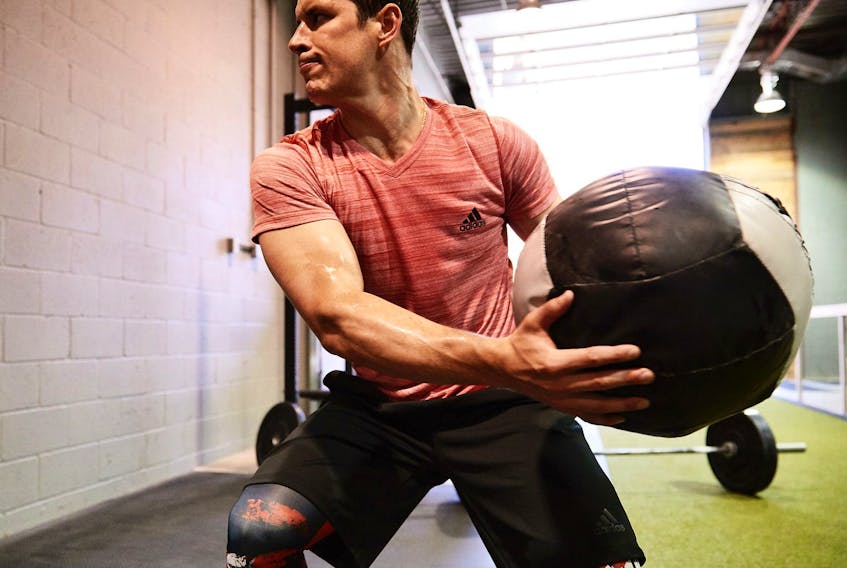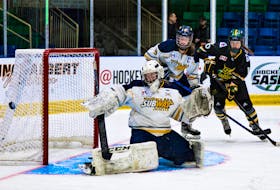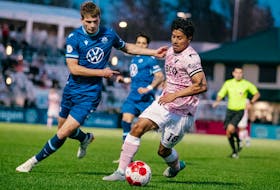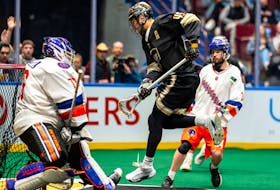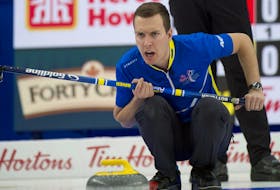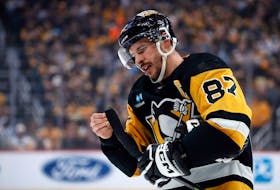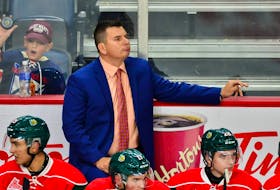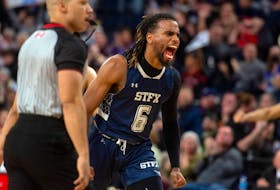There are a million “good” athletes around, in every nook and cranny of the world, even Newfoundland.
But there are far fewer really gifted athletes. And even fewer, still, the special ones, who have the intangibles needed to reach professional stardom.
Kaetlyn Osmond didn’t get to the Olympics, or to the top of the world championship podium without work.
A large degree of natural talent is required — that’s a given — but so is the mindset to put everything else aside to make it happen.

Osmond skates three time a day — in 60-minute intervals — supplemented with off-ice training sessions, physio and massage, and work with sports psychologists and nutritionists.
That’s every day, five days a week.
“The dedication it takes to be at the top is enormous,” her coach, Ravi Walia, told me. “She has put all her attention into succeeding in figure skating. You live, eat, breathe, sleep … everything revolves around this sport.”
It would not be a stretch to say almost nobody has thrown more curling rocks than Brad Gushue. It’s one of the reasons why he’s one of the top three curlers in the world.
The work ethic displayed by the greatest basketball player on the planet is legendary. Lebron James, it’s said, is often the last player off the court in practice, and then usually hits the gym for 45 or 60 minutes.
His Cleveland Cavaliers teammate, Kyle Korver, relayed a story from last season, after James had lit up the Utah Jazz for 33 points, 10 rebounds and six assists.
“He played (38) minutes, he played hard,” Korver told the fitness website, STACK.com. “And the next morning, he was on the VersaClimber when everybody else got there, in full sweat doing a massive strength and cardio workout.”
In a television documentary, “Scout’s Honour”, former long-time baseball scout Mel Didier recalls when Wade Boggs, the Hall of Fame third baseman, broke into the majors with the Boston Red Sox. Boggs was not a good defender, Didier said, but would take anywhere from 100 to 200 ground balls a day — during the season — which eventually won him a couple of Gold Glove Awards.
“It’s about what’s in here,” Didier said, tapping the left side of his chest, when asked what a scout looks for in an athlete, aside from the obvious skills.
Back to the ice, it would be easy for Sidney Crosby to put it on cruise control now, with three Cups, a couple of scoring championships, regular season and playoff MVP awards and Olympic gold medals in his trophy case.
Not a chance, and that is part of Crosby’s brilliance.
“His work ethic is out of this world,” Mark Tobin says of his friend and former junior teammate. “I mean, the talent is there. That’s obvious. But his drive and determination is unbelievable. He’s never taken a summer off.”

Crosby, like the other great ones, is said to eat and sleep hockey.
“Remember when people were saying he lost his goal-scoring touch?” asks Tobin, the St. John’s native who played junior with Crosby in Rimouski, Que. “He worked on it, and then went out and scored 44 goals and won the (Maurice) Richard Trophy.
“If there’s room for improvement, I guarantee you he’s going to find it. His work ethic, I’ve never anything like it.”
Every young hockey player out there wants to play in the NHL, just as every young basketball player would love to play college ball.
It’s doesn’t make a difference, really, regardless of the sport. Most young swimmers, I assume, can envision themselves in the Olympics.
Question is, do you want it? Do you really, really want it?
Ask any scout, coach or front office executive. They’ll all say the same thing: talent only gets you halfway there.
——

He’s long been hailed by many old-timers as the greatest hockey player to come out of Newfoundland, perhaps to the dismay of the millennials who believe that right belongs to Daniel Cleary or Michael Ryder.
They have a point, no doubt, leaning towards the long-time NHLers and Stanley Cup winners.
But George Faulkner has his supporters, and one of them is former NHL goaltender Gary Simmons, who played senior hockey in Newfoundland with Conception Bay when Faulkner was the CeeBees’ player-coach.
“Of all the defencemen I played with,” says the goalie known as “Cobra,” “whether it’s in the NHL, Western league, International league or wherever, he’s probably in the top four calibre-wise of all of them combined.
“He was that good.”
Faulkner had his shot at the NHL, but was in the Montreal Canadiens’ system. And cracking the Habs’ lineup in the 1950s was akin to cracking a safe.
Later, Faulkner made a name for himself with the national team at the 1966 world hockey championship. Playing against the best the Soviet Union and Czechoslovakia had to offer, Faulkner led Canada in scoring with six goals and an assist in seven games playing up front.
Canada would finish with a bronze medal, behind the Soviets and Czechs.
“He was 32 or 33 then, so his age worked against him,” said Simmons, as the NHL expanded by six teams a year later in 1967. “It’s too bad he was Montreal property when he was younger, because that was a tough lineup to break into.
“But boy, was he some kind of player. I’m telling you, he’d play a full 60 minutes some nights for us (CeeBees).”
IN SHORT
Jeff Osmond admits he didn’t put his daughters, Kaetlyn and Natasha, in figure skating for them to be figure skaters. “Hockey was the end game,” he says with a chuckle … Hearing Junior Edwards will be coaching the St. Lawrence Laurentians this summer … In a couple of years from now, there could be as many as four Newfoundland women playing NCAA Division I hockey — Maggie Connors at St. John’s (Princeton), Amy Curlew of Happy Valley-Goose Bay (Cornell), Shailynn Snow of Clarke’s Beach (St. Lawrence) and Abby Newhook of St. John’s (Boston College). Curlew is finishing off her second year at Cornell, while Connors will be a freshman at Ivy League Princeton next season … Saw where Calgary Flames general manager Brad Treliving was saying at his news conference announcing the firing of Glen Gulutzan that the new coach of the Flames will need to be experienced. In other words, Treliving plans to recycle someone like Bill Peters or Alain Vigneault. Didn’t Dave Hakstol come into the NHL unproven after 15 years at North Dakota, and has led the Philadelphia Flyers into the playoffs twice in the past three years? Bruce Cassidy was in the Ontario Hockey League and AHL 10 years before the Boston Bruins gave him a shot. The brilliant Ken Hitchcock spent six years in the Western Hockey League and three in the old International league — sandwiched by three years as an assistant in Philly — before the Dallas Stars hired him. Four years later, Hitchcock delivered a Stanley Cup. This whole idea when it comes to coaching hirings of going after someone who’s been kicking around the league is archaic … The National Pro Rugby League is looking to become the first pro rugby circuit in North America. Wonder if a franchise would work in St. John’s, where there’s a decent rugby following? … If the St. John’s Edge have proven anything, it’s ECHL hockey will work in St. John’s if a) the team is winning b) fans can get into the building at a decent price and c) once they get into the rink, they’re entertained … The New York Times reported this week the NBA is giving a pay hike to the players in the G League starting next season. Players will pocket $35,000 — or $7,000 a month — in addition to housing and insurance benefits over a five-month season. Previous salaries were either $26,000 or $19,000. Compare that to the National Basketball League of Canada which has a salary cap of $170,000 per team. Given a 12-player roster and a 20-week regular-season schedule, it works out to an average salary of just over $700 a week …
Robin Short is The Telegram’s Sports Editor. He can be reached by email [email protected] Follow him on Twitter @TelyRobinShort

